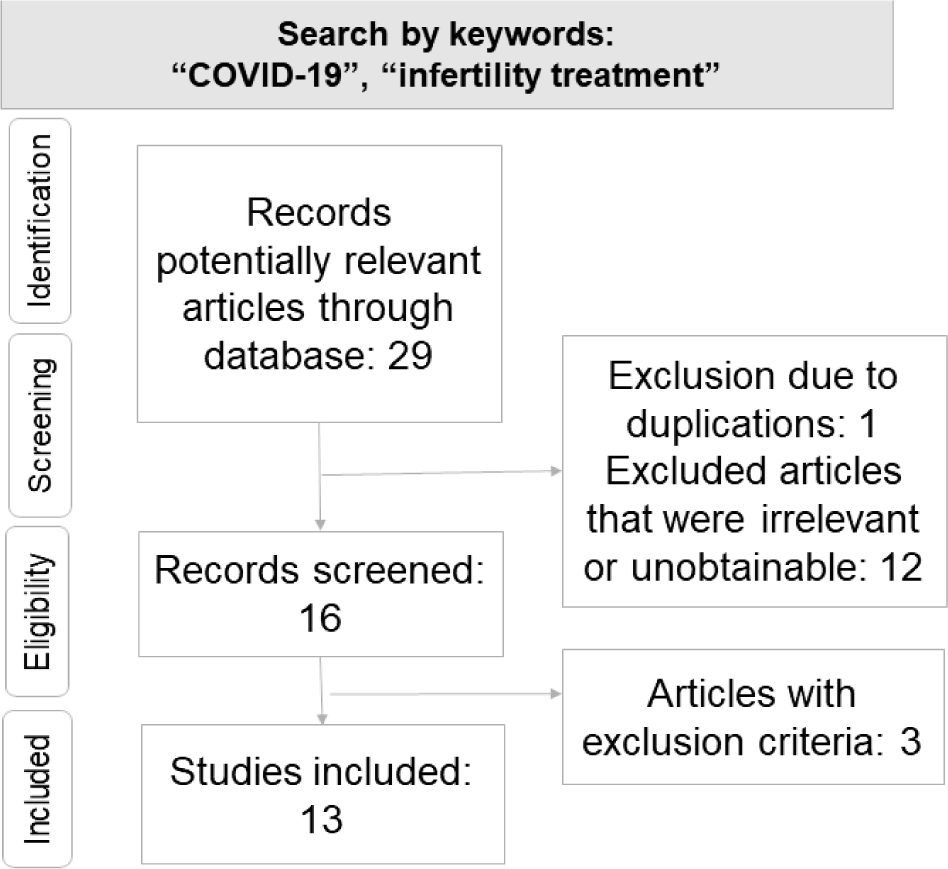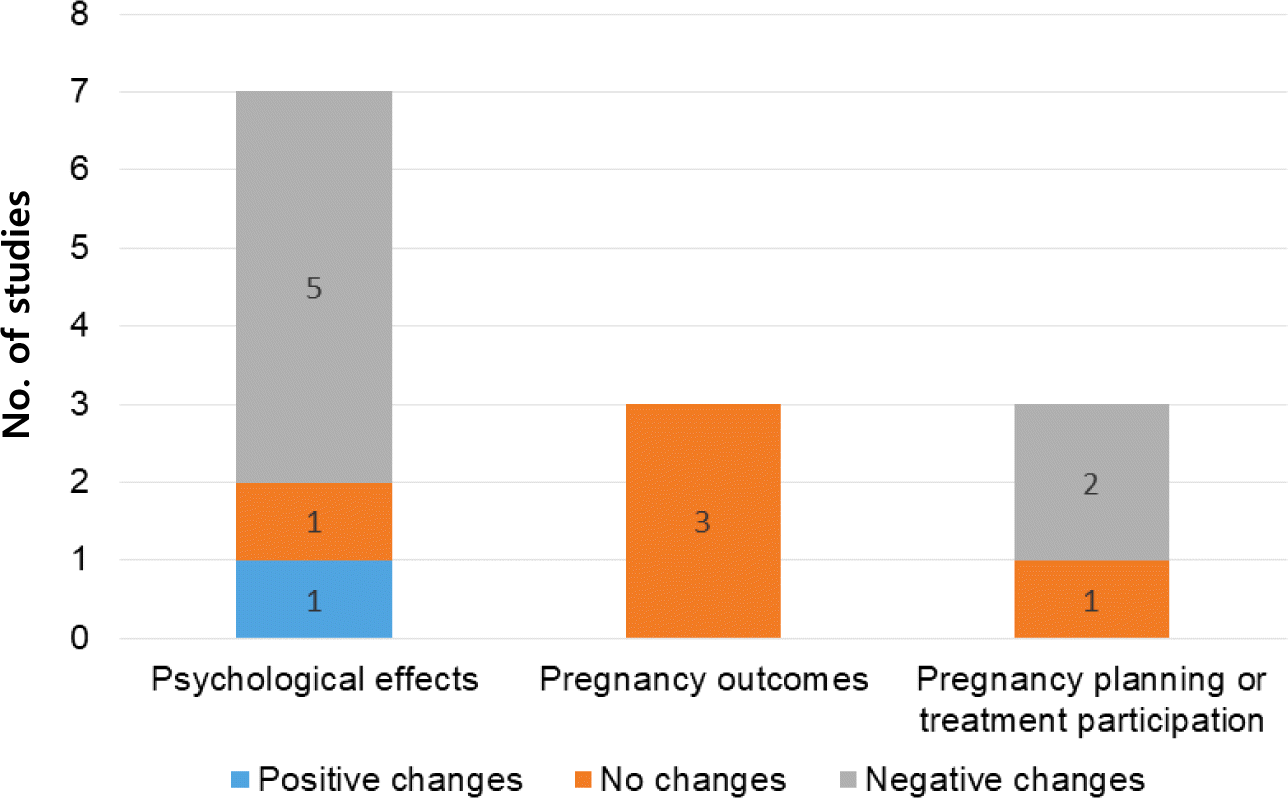Aizer A., Noach-Hirsh M., Dratviman-Storobinsky O., Nahum R., Machtinger R., Yung Y, et al. The effect of coronavirus disease 2019 immunity on frozen-thawed embryo transfer cycles outcome. Fertil Steril. 2022. 117:974–79.
https://doi.org/10.1016/j.fertnstert.2022.01.009
.

An SM., Choe SA., Jun BY. Physical activity and successful pregnancy in 6 months: a finding from the pregnancy and urban environment study. J Korean Soc Matern Child Health. 2021. 25:81–7.
https://doi.org/10.21896/jksmch.2021.25.2.81
.

Cao LB., Hao Q., Liu Y., Sun Q., Wu B., Chen L, et al. Anxiety level during the second localized COVID-19 pandemic among quarantined infertile women: a cross-sectional survey in China. Front Psychiatry. 2021. 12:647483.
https://doi.org/10.3389/fpsyt.2021.647483
.

Cheng CY., Stevenson EL., Yang CT., Liou SR. Stress and quality of life for Taiwanese women who underwent infertility treatment. J Obstet Gynecol Neonatal Nurs. 2018. 47:498–508.
https://doi.org/10.1016/j.jogn.2018.03.005
.

Choi SM., Lee YS. The focus group interview on infertility experts for the development of infertility counseling system. J Korean Soc Matern Child Health. 2020. 24:26–39.
http://doi.org/10.21896/jksmch.2020.24.1.26
.

Cirillo M., Rizzello F., Badolato L., De Angelis D., Evangelisti P., Coccia ME, et al. The effects of COVID-19 lockdown on lifestyle and emo tional state in women undergoing assisted reproductive technology: results of an Italian survey. J Gynecol Obstet Hum Reprod. 2021. 50:102079.
http://doi.org/10.1016/j.jogoh.2021.102079
.

Daudt HM., van Mossel C., Scott SJ. Enhancing the scoping study methodology: a large, inter-professional team's experience with Arksey and O’ Malley's framework. BMC Med Res Methodol. 2013. 13:48.
https://doi.org/10.1186/1471-2288-13-48
.

Freeman MP., Lee H., Savella GM., Sosinsky AZ., Marfurt SP., Murphy SK, et al. Predictors of depressive relapse in women undergoing infertility treatment. J Womens Health (Larchmt). 2018. 27:1408–14.
https://doi.org/10.1089/jwh.2017.6878
.

Goldman RH., Farland LV., Thomas AM., Zera CA., Ginsburg ES. The combined impact of maternal age and body mass index on cumulative live birth following in vitro fertilization. Am J Obstet Gynecol. 2019. 221:617.e1–13.
https://doi.org/10.1016/j.ajog.2019.05.043
.

Health Insurance Review and Assessment Service. Disease subdivision (phase III) statistics [Internet]. Wonju (Korea): Health Insurance Review and Assessment Service;2023. [cited 2023 Feb 12]. Available from:
http://opendata.hira.or.kr/op/opc/olap3thDsInfo.do
.
Hu L., Du J., Lv H., Zhao J., Chen M., Wang Y, et al. Influencing factors of pregnancy loss and survival probability of clinical pregnancies conceived through assisted reproductive technology. Reprod Biol Endocrinol. 2018. 16:74.
https://doi.org/10.1186/s12958-018-0390-6
.

Hwang JH., Kim YY., Im HB., Han D. Complementary and alternative medicine use among infertile women attending infertility specialty clinics in South Korea: does perceived severity matter? BMC Complement Altern Med. 2019. 19:301.
https://doi.org/10.1186/s12906-019-2727-x
.

Ilska M., Kołodziej-Zaleska A., Brandt-Salmeri A., Preis H., Lobel M. Pandemic-related pregnancy stress assessment-Psychometric properties of the Polish PREPS and its relationship with childbirth fear. Midwifery. 2021. 96:102940.
https://doi.org/10.1016/j.midw.2021.102940
.

Jang IS., Hwang NM., Park SM. Factors affecting the pregnancy rate of intrauterine inseminations in unexplained infertile couples in Korea: focusing on treatment type for inducing ovulation. J Korean Biol Nurs Sci. 2015. 17:211–7.
http://doi.org/10.7586/jkbns.2015.17.2.211
.

Jung YJ., Kim HY. Factors influencing infertility-related quality of life in women undergoing assisted reproductive techniques: focusing on depression and resilience. Korean J Women Health Nurs. 2017. 23:117–25.
https://doi.org/10.4069/kjwhn.2017.23.2.117
.

Kim J., Chu K., Lee SJ., Lee TH., Chon SJ., Cho SE, et al. Review and future perspectives of the Korea Counseling Center for Fertility and Depression (KCCFD) counseling service based on user characteristics: focusing on infertility. J Korean Soc Matern Child Health. 2020. 24:181–95.
http://doi.org/10.21896/jksmch.2020.24.4.181
.

Kim KH., Jang S., Lee JA., Go HY., Jung J., Park S, et al. Characteristics and outcomes of female infertility treatment programs using traditional medicine in Korea: a multisite analysis. J Altern Complement Med. 2018. 24:570–7.
https://doi.org/10.1089/acm.2016.0384
.

Kim MO. Relationship between infertility stress and quality of life of infertile women: based on the moderating and mediating effects of sexual satisfaction. J Korean Soc Matern Child Health. 2016. 20:140–51.
https://doi.org/10.21896/jksmch.2016.20.2.140
.

Kim MO., Park JM., Hong JE., Ban MK. The study of relationship among infertility stress, gratitude, and couple relationship changes of women undergoing reproductive treatments. J Korean Soc Matern Child Health. 2021. 25:169–76.
https://doi.org/10.21896/jksmch.2021.25.3.169
.

Kim YJ., Hwang BD. The infertility characteristics of patients in the obstetrics and gynecology specialized hospital and effect of pregnancy on the type of assisted reproductive technology. J Korea Acad-Ind Coop Soc. 2016. 17:318–26.
https://doi.org/10.5762/KAIS.2016.17.8.318
.

Lawson AK., McQueen DB., Swanson AC., Confino R., Feinberg EC., Pavone ME. Psychological distress and postponed fertility care during the COVID-19 pandemic. J Assist Reprod Genet. 2021. 38:333–41.
https://doi.org/10.1007/s10815-020-02023-x
.

Lee HS., Boo S., Ahn JA., Song JE. Effects of uncertainty and spousal support on infertility-related quality of life in women undergoing assisted reproductive technologies. Korean J Women Health Nurs. 2020. 26:72–83.
https://doi.org/10.4069/kjwhn.2020.03.15
.

Lee YJ., Yoon JS., Kim YK., Kim EH. Clinical manifestations and maternal and perinatal outcomes in pregnancy following laboratory-confirmed SARS-CoV-2 infection in South Korea. J Korean Soc Matern Child Health. 2022. 26:104–11.
https://doi.org/10.21896/jksmch.2022.26.2.104
.

Lee YS., Kwon JH. A survey on the current status and demands of infertility counseling towards the development of an infertility counseling delivery system. J Korean Soc Matern Child Health. 2020. 24:52–6.
https://doi.org/10.21896/jksmch.2020.24.1.52
.

Lin SK., Wu CT., Chou HJ., Liu CJ., Ko FY., Huang CH, et al. The dynamics of patient visits to traditional Chinese medicine during the 2019 coronavirus pandemic. BMC Complement Med Ther. 2021. 21:70.
https://doi.org/10.1186/s12906-021-03245-x
.

Massarotti C., Gentile G., Ferreccio C., Scaruffi P., Remorgida V., Anserini P. Impact of infertility and infertility treatments on quality of life and levels of anxiety and depression in women undergoing in vitro fertilization. Gynecol Endocrinol. 2019. 35:485–9.
https://doi.org/10.1080/09513590.2018.1540575
.

Mitrović M., Kostić JO., Ristić M. Intolerance of uncertainty and distress in women with delayed IVF treatment due to the COVID-19 pandemic: the mediating role of situation appraisal and coping strategies. J Health Psychol. 2021. 27:2515–28.
https://doi.org/10.1177/13591053211049950
.

Munn Z., Peters MD., Stern C., Tufanaru C., McArthur A., Aromataris E. Systematic review or scoping review? Guidance for authors when choosing between a systematic or scoping review approach. BMC Med Res Methodol. 2018. 18:48.
https://doi.org/10.1186/s12874-018-0611-x
.

Nassan FL., Chiu YH., Vanegas JC., Gaskins AJ., Williams PL., Ford JB, et al. Intake of protein-rich foods in relation to outcomes of infertility treatment with assisted reproductive technologies. Am J Clin Nutr. 2018. 108:1104–12.
https://doi.org/10.1093/ajcn/nqy185
.

Nicoloro-SantaBarbara J., Busso C., Moyer A., Lobel M. Just relax and you'll get pregnant? Meta-analysis examining women's emo tional distress and the outcome of assisted reproductive technology. Soc Sci Med. 2018. 213:54–62.
https://doi.org/10.1016/j.socscimed.2018.06.033
.

Pinheiro RL., Areia AL., Mota Pinto A., Donato H. Advanced maternal age: adverse outcomes of pregnancy, a meta-analysis. Acta Med Port. 2019. 32:219–26.
https://doi.org/10.20344/amp.11057
.

Pretzel S., Kuhn K., Pal L., Polotsky A., Taylor HS., Zhang H, et al. Willingness of women with endometriosis planning to undergo IVF to participate in a randomized clinical trial and the effects of the COVID-19 pandemic on potential participation. Reprod Sci. 2022. 29:620–6.
https://doi.org/10.1007/s43032-021-00705-0
.

Sacha CR., Page CM., Goldman RH., Ginsburg ES., Zera CA. Are women with obesity and infertility willing to attempt weight loss prior to fertility treatment? Obes Res Clin Pract. 2018. 12:125–8.
https://doi.org/10.1016/j.orcp.2017.11.004
.

Seifer DB., Petok WD., Agrawal A., Glenn TL., Bayer AH., Witt BR, et al. Psychological experience and coping strategies of patients in the Northeast US delaying care for infertility during the COVID-19 pandemic. Reprod Biol Endocrinol. 2021. 19:28.
https://doi.org/10.1186/s12958-021-00721-4
.

Setti AS., Braga DPAF., Halpern G., Figueira RCS., Iaconelli A Jr., Borges E Jr. Is there an association between artificial sweetener consumption and assisted reproduction outcomes? Reprod Biomed Online. 2018. 36:145–53.
https://doi.org/10.1016/j.rbmo.2017.11.004
.

Somigliana E., Busnelli A., Vigano P., Vegetti W., Goisis A., Vercellini P. Is early initiation of infertility treatment justified in women over the age of 35 years? Reprod Biomed Online. 2020. 40:393–8.
https://doi.org/10.1016/j.rbmo.2019.12.006
.

Tricco AC., Lillie E., Zarin W., O'Brien K., Colquhoun H., Levac D, et al. PRISMA extension for scoping reviews (PRISMA-ScR): checklist and explanation. Ann Intern Med. 2018. 169:467–73.
https://doi.org/10.7326/M18-0850
.

Vastis V., Hussaini S., Neal M., Karnis M., Taerk E., Amin S, et al. Impact of protocol adjustments due to the COVID-19 pandemic on infer tility treatment outcomes. J Obstet Gynaecol Can. 2022. 44:1006–10.
https://doi.org/10.1016/j.jogc.2022.03.021
.

Yovich JL., Regan SLP., Zaidi S., Keane KN. The concept of growth hormone deficiency affecting clinical prognosis in IVF. Front Endocrinol (Lausanne). 2019. 10:650.
https://doi.org/10.3389/fendo.2019.00650
.





 PDF
PDF Citation
Citation Print
Print





 XML Download
XML Download